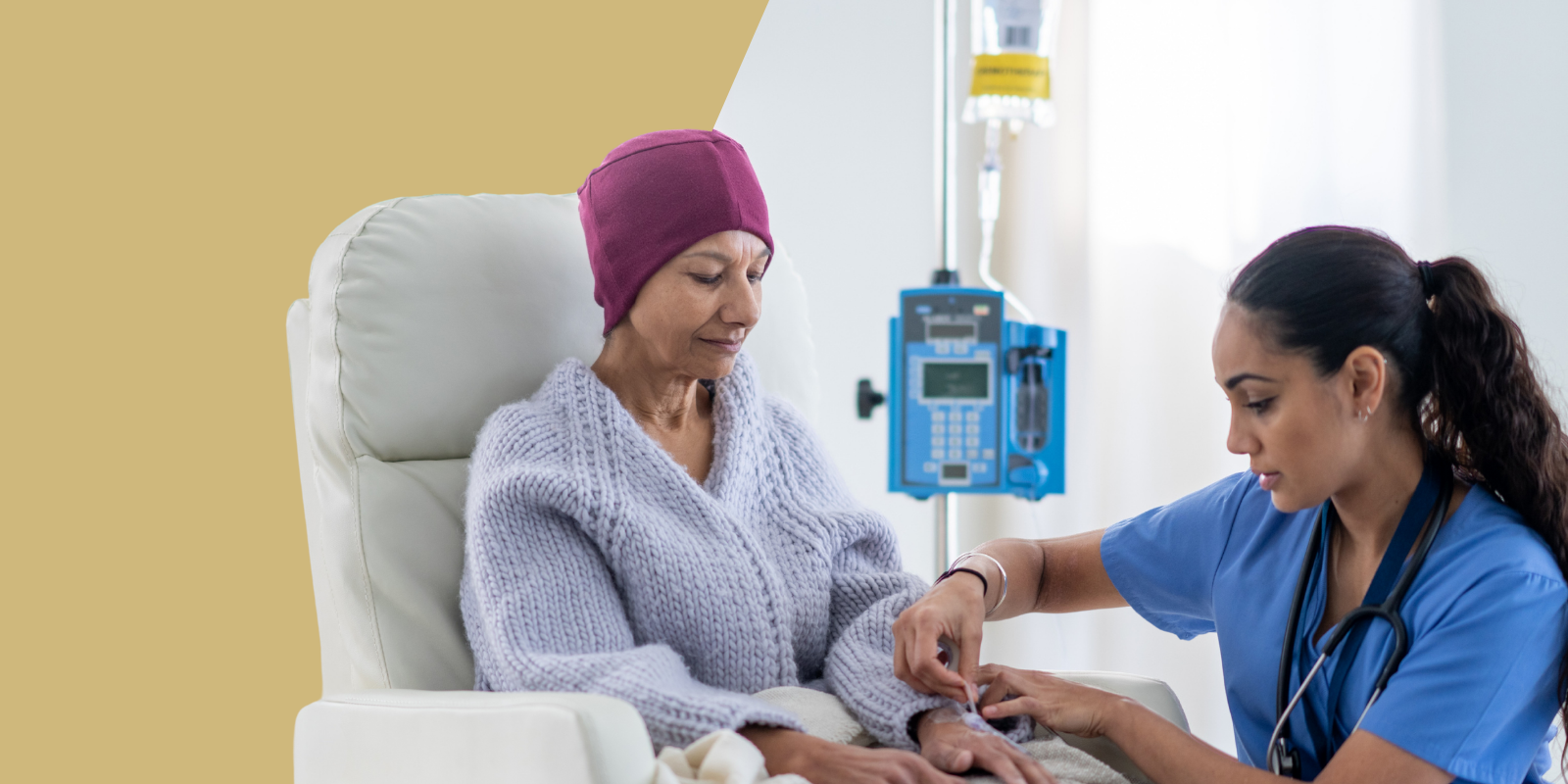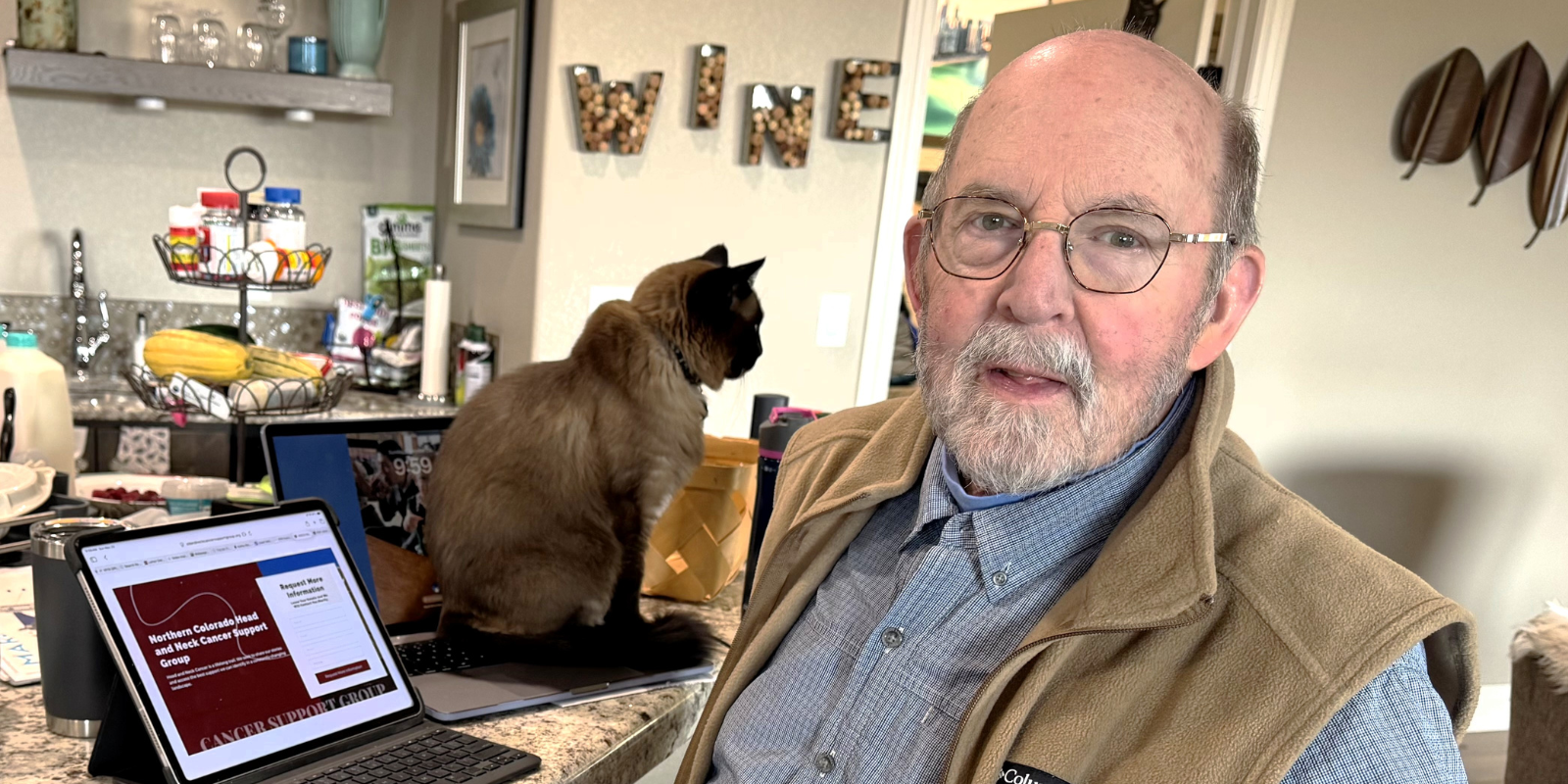For Doug Scanlon, last year’s Walk to End Colon Cancer was a victory lap. This year, it’s more like a homecoming.
“Relationships have been very important to me throughout my life, but the ones I made at the University of Colorado Cancer Center and UCHealth were critical,” says Scanlon, who received treatment for his colon cancer from a multidisciplinary CU Cancer Center team that included Alexis Leal, MD, and Ana Gleisner, MD, PhD. “I don’t want to be overly dramatic, but I’ve grown to love them. I love them for what they’ve done for me, but I also love them for who they are. Because it’s not just me they're treating — it’s everybody who walks through their doors.”
When Scanlon took part in last year’s Walk to End Colon Cancer, he had just finished his second successful surgery for a cancer that started in his colon and spread to his liver. When he walks in this year’s race on June 24 at City Park, he’s looking forward to seeing the members of his care team who take part in the annual event that aims to battle stigma, increase access to prevention, research, and treatment, and raise awareness of the deadly disease.
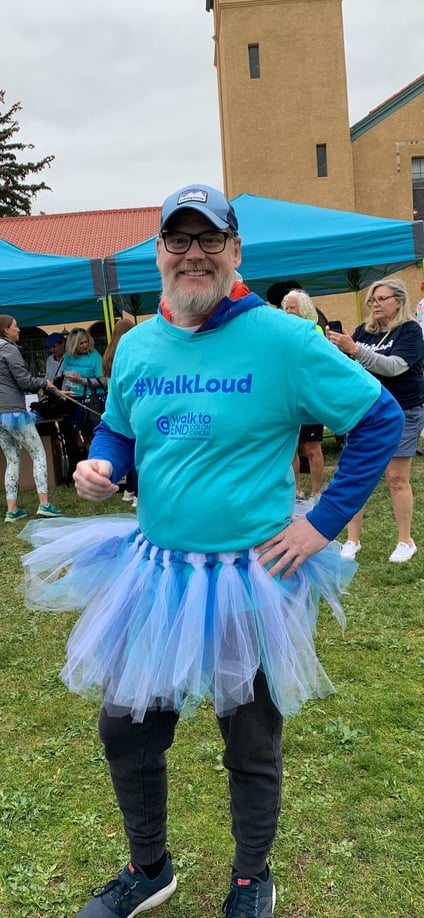
Scanlon sports the team uniform at last year's Walk to End Colon Cancer.
“Letting people know that this is preventable is something near and dear to me,” Scanlon says. “I tell my friends, ‘Go get a colonoscopy, because you could spare yourself two years of hell.’”
Making the right connection
For Scanlon, who lives in Boulder, that hellish experience started in the fall of 2020 with what he thought was an ulcer. When the medicine the doctor prescribed to ease the pain under his ribs didn’t help and Scanlon discovered blood in his stool, suddenly the situation became much more serious. His doctor scheduled him for a colonoscopy, but the procedure couldn’t be completed because of the tumors the imaging showed were blocking his colon. Further scans revealed the cancer had spread to his liver as well, which was causing the pain under his ribs. He was 48 years old.
Scanlon began treatment at a cancer center in Boulder, but his cousin, who is an oncologist, encouraged him to go to an academic center where cutting-edge treatments and clinical trials were available. That advice led him to the CU Cancer Center and its clinical partner UCHealth University of Colorado Hospital, where he first met with the multidisciplinary care team that devised his treatment plan.
“I had a connection with them immediately,” he says. “The perspectives they had regarding treatment, regarding surgeries — whatever they had at their disposal, I felt that they would take advantage of those. I thought, ‘I’m young; you’re not going to kill me. Throw everything at me. Give me every possible weapon that you have at your disposal, and let’s go for it.’ I remember sitting with Dr. Gleisner and saying I didn’t want to be a patient that lived with cancer; I wanted to live without cancer.”
A lifesaving device
Scanlon’s treatment began with a round of chemotherapy; two months later he had surgery to remove the tumors in his colon. As the cancer that had spread to his liver was too sizeable to operate on, he was outfitted with a hepatic arterial infusion pump. The hockey puck-sized device is implanted in the abdomen to deliver doses of chemotherapy directly to the liver tumors, and is complementary to his systemic chemotherapy, to achieve more focused results in the liver with the hope that he would one day be able to have his liver disease removed surgically. Thankfully, this plan came to fruition. The pump will remain in Scanlon’s body for the next several years, just in case the cancer comes back.
The CU Cancer Center is a member of the Hepatic Arterial Infusion (HAI) Consortium, comprised of academic centers nationwide with HAI pump programs. Further, the CU Cancer Center is looking forward to participating in an upcoming clinical trial tentatively planned to begin enrolling this fall which will investigate the use of systemic chemotherapy with or without HAI chemotherapy in patients with metastatic colorectal cancer with unresectable liver metastases.
“In patients who have tumor(s) in the liver, the HAI pump allows for very efficient delivery of chemotherapy directly to the tumors. Due to the intricacies of the blood supply in the liver, the healthy liver is essentially spared the effects of the chemotherapy, and the liver metabolizes the drug before the blood leaves the liver and goes to the rest of the body, so typically, patients do not notice any additional side effects from this therapy,” Leal says. “This treatment is reserved for patients with liver only metastases and the thought is that this extra boost of chemotherapy in the liver can lead to better responses, like Doug was able to achieve, such that patients who were initially unresectable may be at some point able to undergo surgical resection. We are looking forward to the opening of the upcoming HAI clinical trial which will be accruing patients nationwide, as this trial will help to answer this question.
Leal says she is looking forward to seeing Scanlon and other current and former patients at the Walk to End Colon Cancer, where this year she is captain of the CU Cancer Center team.
“One of the things I love the most about the walk is getting to see our patients outside of the clinic having a good time,” she says. “My hope is that we’re seeing them outside of the clinic and they are feeling good. It’s also great to raise money for this cause: to increase awareness for colon cancer and hopefully catch this disease earlier, prevent colon cancers, and ultimately improve our outcomes.”
Living cancer free
After Scanlon’s liver surgery in May 2022 — shortly before last year’s Walk to End Colon Cancer — scans showed that he was cancer free. Even so, another tumor appeared on his right adrenal gland several months later. Radiation wasn’t as effective as doctors hoped in eliminating the tumor, so Scanlon eventually underwent another surgery to remove the gland. He worries that the cancer could return again in some form, but he tries to ignore that fear as much as he can.
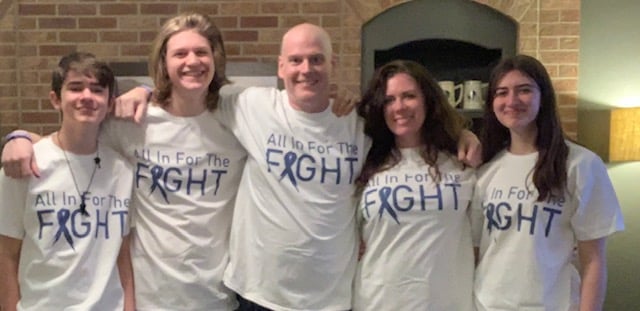 Scanlon with his family.
Scanlon with his family.
“My energy right now is spent trying to get out of my head,” he says. “If I can't control it, then why spend time wringing my hands about it? Sure, I’ve got concerns that it might pop back up, but I can't do a damn thing about it. If a CT scan shows that it’s back, that's when my focus will change and we’ll get back to work. But right now, I try to relax and enjoy the fact that I don’t have cancer.”
Scanlon is grateful to his care team at the CU Cancer Center and UCHealth, but he says the “greatest hero in my story” is his wife, Kendra, who has “been through it all and has been an absolute rock for me and our family.” He also had support from #TeamDoug, a group of friends, family, and co-workers across the country who rallied around Scanlon and his family during the health crisis.
“Prior to my diagnosis and treatment, I wasn’t one who believed that sort of thing would have an impact, but I wholeheartedly believe it did,” he says. “To know and to feel that much love and support from so many had a significant effect on my mental and physical health throughout this ordeal. I think it was a big factor in the no-evidence-of-disease state I have today.”
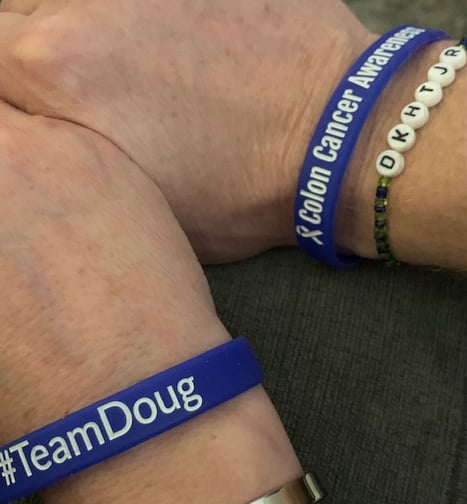 #TeamDoug bracelets.
#TeamDoug bracelets.
That cancer-free state makes everything in life more meaningful, he says, from going to work to attending concerts — one of his favorite activities — to milestones like watching two of his children graduate from high school this spring.
“I don’t want to sound poetic, but you really do appreciate things a whole lot more,” he says. “My parents came out from Pittsburgh for the graduations, and my mom and I sat there, and it was one of those moments, like, ‘I’m here. I’m still here.’”

